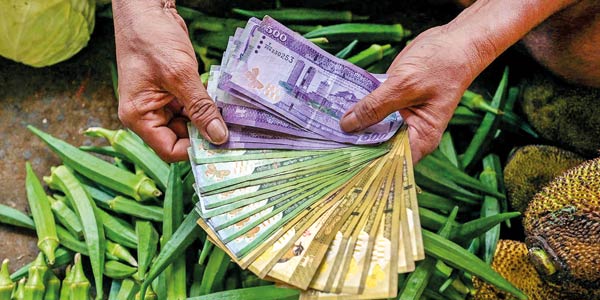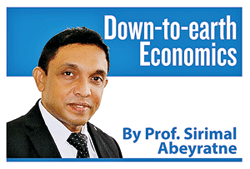Vietnam’s VAT reduction
View(s):Sri Lanka—shared an interesting update in our WhatsApp group:
“We have just reduced our VAT rate in Vietnam from 10 to 8 per cent.”

Lower VAT will improve productivity and enhance benefits across the board.
This news may come as a surprise to many in Sri Lanka, where people face an 18 per cent VAT in addition to several other indirect taxes on goods and services. Vietnam’s tax system is structured differently. Apart from VAT, the country imposes two other domestic taxes: Special Consumption Tax (SCT) which is applied to automobiles, alcoholic beverages, and tobacco products; Environmental Protection Tax (EPT), levied on products harmful to the environment, such as petroleum and plastic bags.
Both SCT and EPT are narrowly targeted, serving specific policy purposes. As a result, the only broadly applicable indirect tax in Vietnam is VAT, which covers the full range of goods and services.
This streamlined approach ensures that indirect taxation does not excessively distort or suppress aggregate demand. Maintaining healthy demand is crucial for protecting living standards and sustaining economic growth. Aggregate demand—comprising household consumption, investment, international trade, and government expenditure—has the potential to drive growth from the demand side.
Lower indirect taxes
 Lower indirect taxes reduce the cost of everyday goods and services, leaving households with more disposable income. When essentials like food, fuel, and utilities are cheaper, families can afford better nutrition, healthcare, and education. This strengthens purchasing power, sustains consumption, and ultimately helps maintain higher living standards. And it helps the poor not only to maintain their basic needs affordable, but also to lift them from poverty.
Lower indirect taxes reduce the cost of everyday goods and services, leaving households with more disposable income. When essentials like food, fuel, and utilities are cheaper, families can afford better nutrition, healthcare, and education. This strengthens purchasing power, sustains consumption, and ultimately helps maintain higher living standards. And it helps the poor not only to maintain their basic needs affordable, but also to lift them from poverty.
Lower indirect taxes reduce production costs and consumer prices, encouraging demand and profitability. Businesses reinvest savings into expansion, innovation, and job creation. Affordable goods stimulate consumption, attracting investors seeking stable markets. This cycle of spending, reinvestment, and confidence fosters sustainable economic growth, strengthening competitiveness and improving long-term development prospects.
Lower indirect taxes reduce production and export costs, making domestic goods more competitive internationally. Affordable pricing attracts foreign buyers, expands market access, and encourages cross-border partnerships. Increased trade flows strengthen foreign exchange reserves, diversify economic opportunities, and enhance global integration, ultimately driving sustainable growth and expanding a nation’s trade footprint.
Lower indirect taxes stimulate consumption, investment, and trade, expanding economic activity. As businesses grow and households spend more, taxable profits and incomes rise. Broader participation in the economy increases compliance and collection efficiency. This virtuous cycle ultimately boosts government tax revenue, despite lower rates, by enlarging the overall tax base.
Slowdown growth
The above discussion also clarifies why Vietnam has chosen to further reduce its VAT rate. For many years, the country sustained rapid growth of 7–8 per cent annually. However, this momentum was disrupted by the COVID-19 global health crisis. Although growth rebounded in 2022, signs of a slowdown have since emerged.
According to World Bank projections, Vietnam’s GDP growth is expected to slow down to 6.8 per cent in 2025 and 6.5 per cent in 2026. The slowdown is largely attributed to weaker demand from major trading partners such as China and the US, coupled with rising uncertainty in global trade. These factors weigh heavily on Vietnam’s export-driven economy.
To counter these challenges, the government has introduced a temporary VAT cut aimed at stimulating domestic consumption and supporting businesses during this period of slower global growth. Everyday goods and services are now taxed at 8 per cent VAT, resulting in lower prices for consumers. Businesses, in turn, are expected to adjust their compliance and pricing strategies to reflect the reduced rate.
The VAT reduction applies to most items people buy daily, making them cheaper: Food and beverages, clothing, footwear, and household goods, electronics and appliances, furniture and home improvement products, Books, stationery, and school supplies, and finally personal care products. Services covered by VAT reduction include transportation, logistics and delivery services, IT products and services, and retail and wholesale trade.
By easing the tax burden on both consumers and businesses, Vietnam aims to sustain domestic demand and cushion its economy against external headwinds.
Direct – Indirect tax revenue
Our discussion would be incomplete without considering income taxes (direct taxes) as well as import duties (indirect taxes on trade). This is particularly important given that Vietnam’s direct tax revenue still accounts for nearly two-thirds of the government’s total tax income, with the remaining one-third generated from indirect taxes.
A broad indirect tax base and strong compliance have been instrumental in maintaining a significant share of indirect tax revenue. This demonstrates that lower indirect tax rates do not necessarily reduce government revenue; instead, they can enhance aggregate demand, which in turn supports higher overall revenue collection.
Historically, Vietnam’s policy choices have favoured reliance on indirect taxation to finance development, while gradually expanding the scope of direct taxes, as a developing country with a per capita GDP of $4,017.
Vietnam continues to refine its tax system. Recent reforms have focused on broadening income tax coverage to achieve a more balanced ratio between direct and indirect taxation, ensuring both fiscal sustainability and equitable growth.
Tax burdens, compared
In Sri Lanka, the income tax burden is significantly higher than in Vietnam. Tax coverage is broader, encompassing nearly all levels of income earners, while the progression of rates with rising incomes is steeper than in Vietnam.
In Vietnam, the lowest Personal Income Tax (PIT) rate of 5 per cent applies to monthly incomes below $250, with the highest rate of 35 per cent levied on incomes above $4,000.
By contrast, in Sri Lanka, monthly incomes below $500 (Rs. 150,000) are exempt from PIT, while the highest rate of 36 per cent applies to incomes above $1,890 (Rs. 566,667). This means that, compared with Vietnam, a large proportion of Sri Lankan income earners are exempt from paying PIT.
However, for those who do fall within the taxable range, the rate progression is abrupt. Tax liability makes a steep jump from 6 per cent to 36 per cent across relatively narrow income slabs, as monthly earnings rise from Rs. 150,000 to Rs. 566,667. On top of this, households also face a heavy indirect tax burden, paying 18 per cent VAT along with other domestic levies on goods and services.
Taxes on import trade
In Sri Lanka, taxes on external trade account for about 14 per cent of total tax revenue—among the highest in Asia. In contrast, Vietnam derives only 3.5 per cent of its tax revenue from trade.
Vietnam’s standard tariff schedule ranges from 5 to 50 per cent. However, as a member of numerous regional and bilateral FTAs, it applies preferential rates of 0–20 per cent on imports from ASEAN, the Trans-Pacific Partnership, the EU, and RCEP. Even lower special preferential rates of 0–5 per cent apply on its imports under 16 FTAs.
Sri Lanka, once more open than Vietnam with a simplified tariff system, reversed the course with the introduction of para-tariffs. After years of this para-tariff regime, Budget 2026 has finally signalled reforms—phasing them out in favour of a four-band tariff schedule ranging from 0 to 30 per cent.
Vietnam’s progress
Vietnam launched its market-oriented reforms in 1986, when its exports were largely agricultural commodities such as rice and fish. In the early 1990s, exports stood at just $3–4 billion; by 2024, they had surged to over $400 billion, compared with only $13 billion in Sri Lanka.
Today, manufactured goods make up 85 per cent of Vietnam’s exports, with high-tech products alone contributing more than 40 per cent. In contrast, Sri Lanka’s high-tech exports remain below 1.5 per cent.
Vietnam’s sustained growth of 7–8 per cent annually illustrates the strong link between export expansion and long-term economic momentum, even in the face of external shocks. Progressive taxation policies and deep global integration have underpinned this remarkable performance.
As a result, by 2024 Vietnam’s rapid growth enabled it to surpass Sri Lanka in per capita GDP, highlighting the transformative power of export-led development. In fact, now Vietnam’s export-led growth, supported by progressive taxation and global integration, has lessons to teach its peers to regain competitiveness and secure sustainable growth in a globalising world.
(The writer is Emeritus Professor at the University of Colombo and Executive Director of the Centre for Poverty Analysis (CEPA) and can be reached at sirimal@econ.cmb.ac.lk and follow on Twitter @SirimalAshoka).
Hitad.lk has you covered with quality used or brand new cars for sale that are budget friendly yet reliable! Now is the time to sell your old ride for something more attractive to today's modern automotive market demands. Browse through our selection of affordable options now on Hitad.lk before deciding on what will work best for you!


